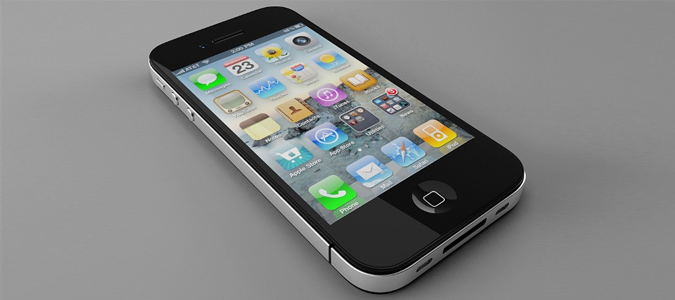While a tangible sense of the past is the easiest sensation to experience when strolling through a Czech city, the country also boasts people that look to the future. These are not just intellectual visionaries, but your average everyday folk who are obsessed with technology, bringing the days of our robotic overlords closer, one smartphone at a time. And that makes sense. Remember The Terminator(s)? Nobody really liked the pasty white kid with social difficulties, his unmemorable father, or the depressive mother with Madonna arms. We admired and rooted for the Terminator, the strong and beautiful super-gadget, the cyborg of our dreams. And in honor of that fact, we decided to investigate the technological tastes of Czech people and made some surprising and told-you-so discoveries.
How does the tech readiness of the Czech Republic compare to the rest of Europe and the U.S.? The quick answer is that the Czechs are somewhere in the middle of the pack, and have some way to go to be true tech pioneers. But there are many shades to that assessment.
We took a look at some specific areas of comparison and in particular, smartphones. According to Jaromír Řánek, the director of sales for the biggest electronics online store, Alza.cz (http://alza.cz), the smartphone market in ČR is “extremely growing”. This is especially due to the spread of the fast 3G network rolled out by Telefónica O2 in 2011, which is accessible to about 73% of the country’s population, and Vodafone’s 3G network, which is up to 66% coverage and growing.

Tablets from various tech companies
The amount of data passing through the Telefónica network was twice as high last year than in the year before. According to the information provided by Blanka Vokounová of O2, 20% of all phones on their network are smartphones, and that number is sure to rocket up as over 60% of the newly bought phones are smartphones (per Hany Farghali of O2).
Alžběta Houzarová of Vodafone confirmed the trend, saying that overall 20% of Czechs got smart(phones), and that over the Christmas shopping period, these kinds of phones accounted for over 80% of the handsets they sold. If you are keeping score, about 40% of US mobile users own smartphones (according to 2011 data by Nielsen), while the Brits hold the European smartphone crown at 45% of total phones in use. Germans come in at 23%.
The main use Czechs get out of their smartphones is emailing and browsing the net, then catching up on social networks. Most people do not get unlimited plans as those are still quite expensive. The days of video chatting via phones haven’t quite arrived.
As far as which smartphones are more popular, according to a Telefónica O2 study, most people still have ones that operate on Nokia’s Symbian OS (62%), which is steadily losing its market share. Nokia is followed by Android (18%), while iPhone is catching up (currently at about 9% of the market). It is expected that the Google Android-based phones will continue to grow at a faster pace, reflecting Android’s top position as the current global OS of choice. Android-running HTC Wildfire S and Samsung Galaxy phones were 3 of the top 5 Vodafone phones sold during Xmas 2011.
One factor that affects the smartphone market is the availability of new technology. Hany Farghali of O2 told us that Czechs can get the latest Samsungs as quickly as anyone else in the world, but the latest US-made phones like iPhones take some time (usually a few weeks but could be longer) to make it to the Czech market. Part of the reason could be the process of “localization”, when the software it translated into Czech.
Jaromir Řánek of Alza.cz confirmed the delay of some new technology becoming available in CR via “official distribution channels” (as opposed to the black market or your friends coming back from the U.S. laden with Apples). If something is first released in the US, it will usually first find its way to other European markets (like Germany) and then head to CR. This “something” may soon be a tablet, which is a new gadget that’s catching Czech Republic’s fancy. While no hard numbers were yet available, Mr. Řánek sees the still small tablet market growing strong not just among individuals, but in the Czech business world. Tablets are a perfect tool for many managers.

Apple Iphone 4S
Another difference between the Czech market and the U.S., according to Hany Farghali of O2, is that “Czech people are extremely price-sensitive to technology.” That is how brands like Nokia and Samsung have dominated the market by providing relatively inexpensive smartphones in contrast with Apple’s iPhone (which accounted for about 28% of the US smartphone market as of 2011 while only 9% of the Czech).
On the other hand, Alza.cz’s Mr. Řánek sees Czechs as generally very interested in electronics, spending a higher share of their household budgets on gadgetry than other European countries. In particular, Czechs buy a lot of technology online, a fact confirmed by the CEE Telco Industry Report of 2011, which found the Czech Republic to be leading Central and Eastern European countries in online shopping. As many as 54% of the Czech online population uses the web for shopping. That’s definitely one popular way to use a smartphone.
Another popular way to use a smartphone is to get on social networks. It’s time to drop some more stats! According to the social media statistics portal Socialbakers (http://socialbakers.com), there are currently 3,552,080 Facebook users in the Czech Republic. That means that the country has a Facebook “penetration rate” of 34.82%, which basically translates to the fact that 34.82% of all Czechs are on Facebook. Another interesting number states that 53.17% of all Czech Internet users are on Facebook. So (for the math-challenged) more than half of all Internet-using Czechs are on Facebook. Twitter statistics are not available at this point as it doesn’t appear to be nearly as popular.
All that places the country in 43rd place among other Facebook-obsessed nations, between Lebanon and Venezuela in penetration, and between Greece and Israel in the total number of users. At the top of the Facebook pyramid are the U.S. (with its 155 million users) and Monaco (which has almost 90% of its population on Facebook).
The Czech Republic is definitely not leading the way in the social media revolution, but it is catching up. Some factors that contributed to the lag are that the Czech-language version of Facebook only became available a year ago, and that only 61% of the country’s households have internet access (according to the Czech Statistical Office – http://www.czso.cz/eng/redakce.nsf/i/about_czso). This is in comparison to the European average of 70% of households with Internet (Netherlands topping the list at 91%). This fairly low number of people who have net access at home places the country below many of the other post-communist nations.
Will the Czechs ever catch up? That answer may be up to the young people who do constitute the majority of Czech Facebook users, with 56% of the country’s total number of users being between the ages of 18 and 34 and 91% of the youngsters between 13-16 having a profile on at least one social network.
Related articles












 Reading time: 6 minutes
Reading time: 6 minutes 



















